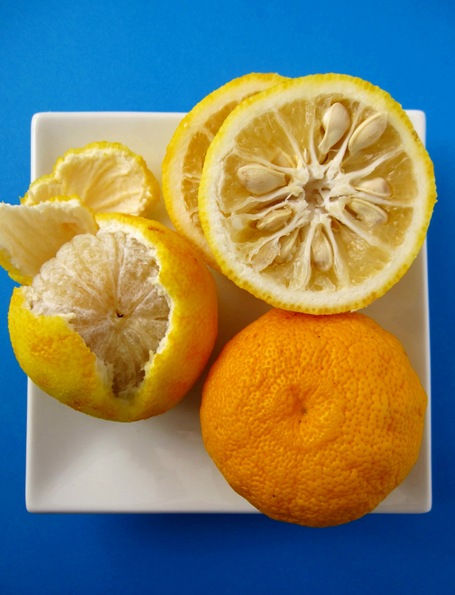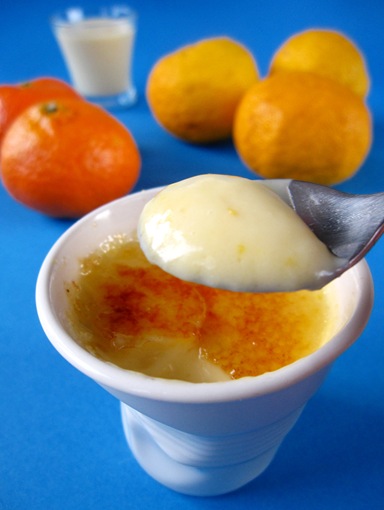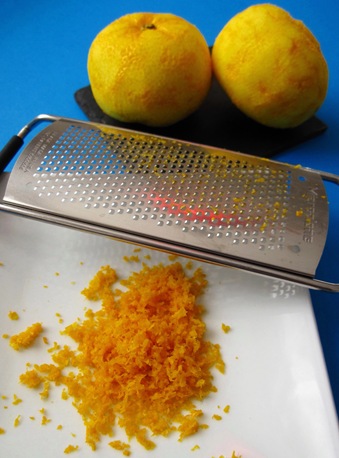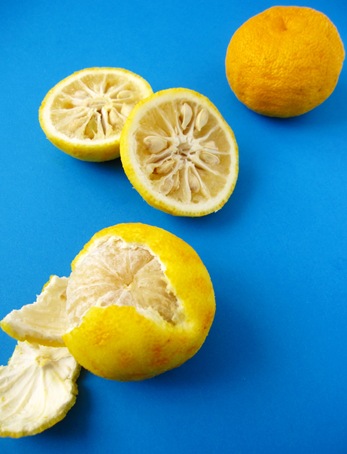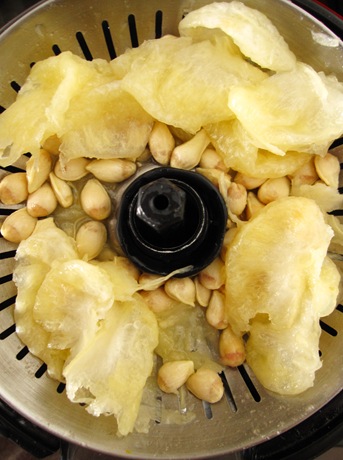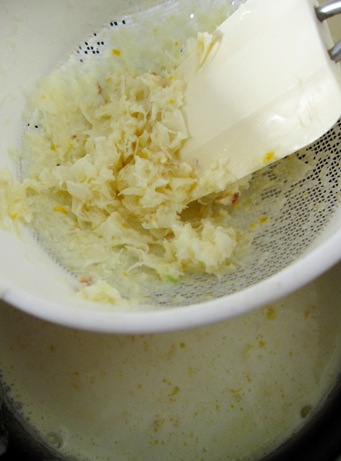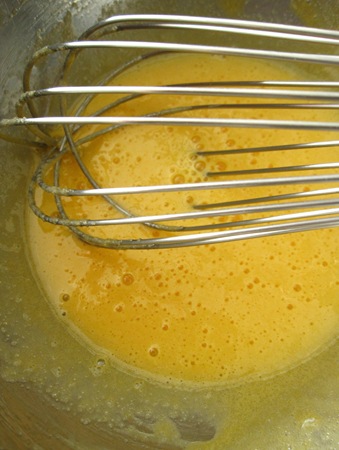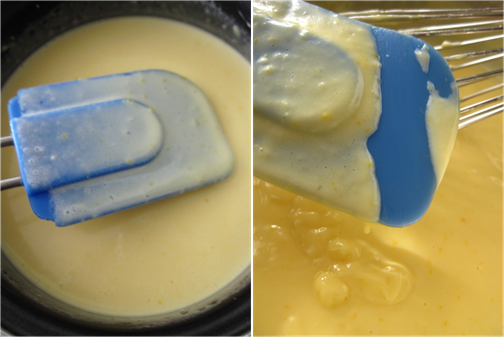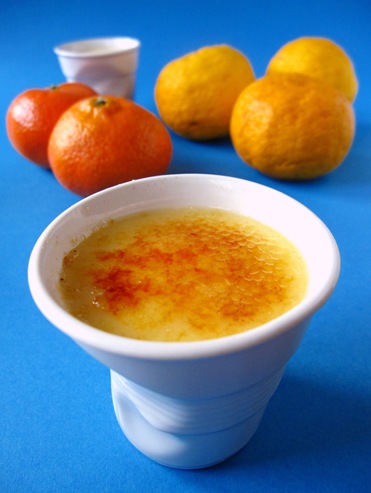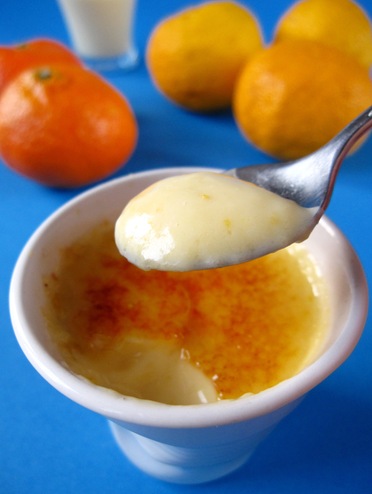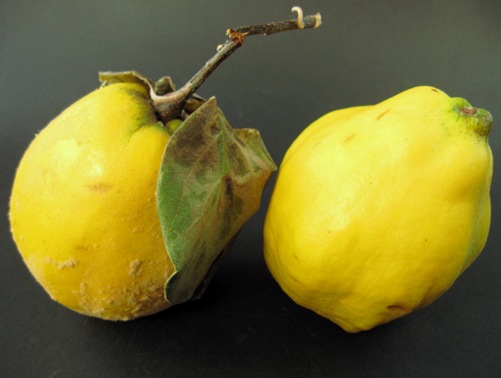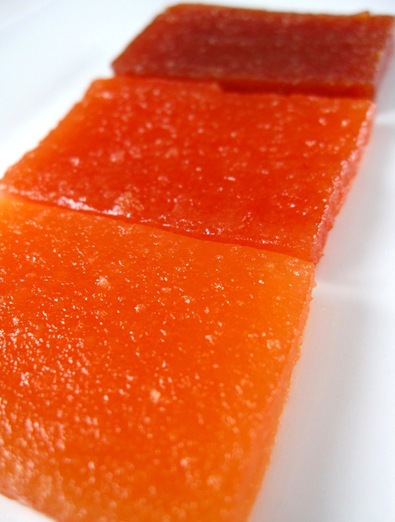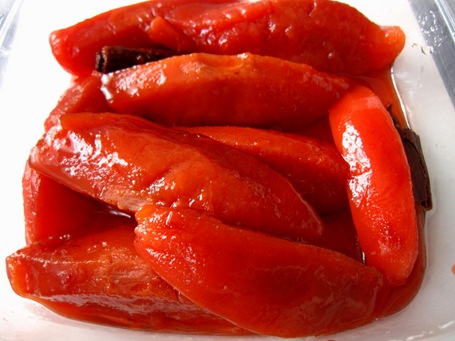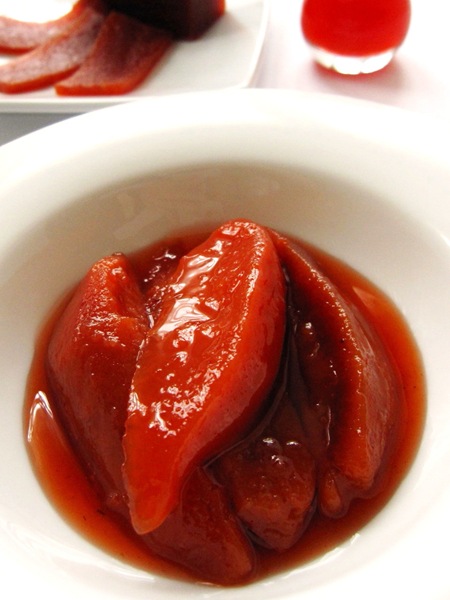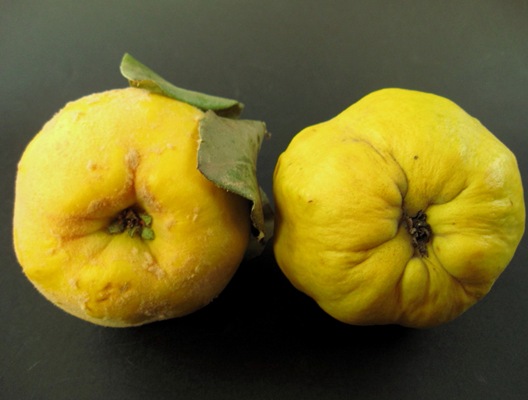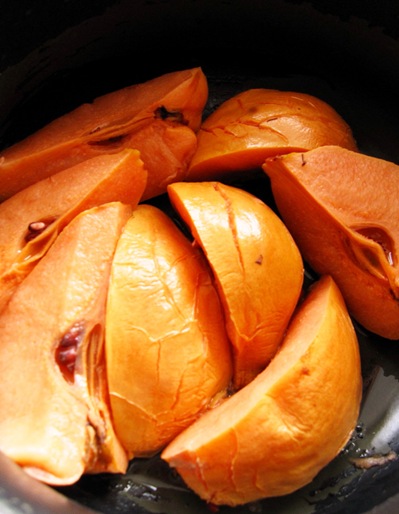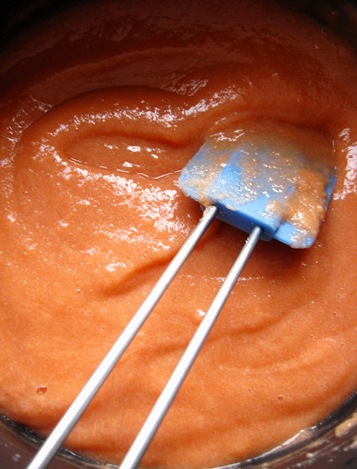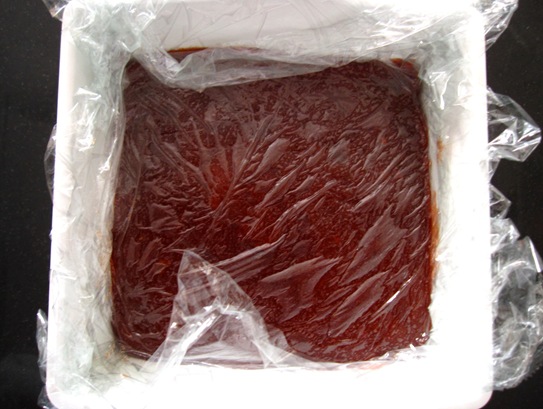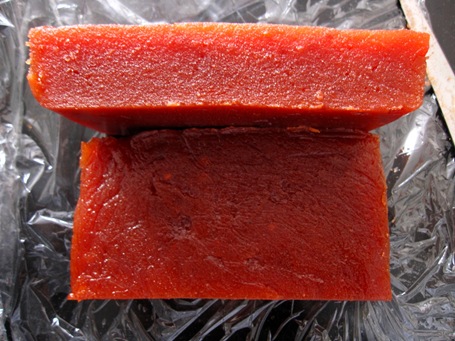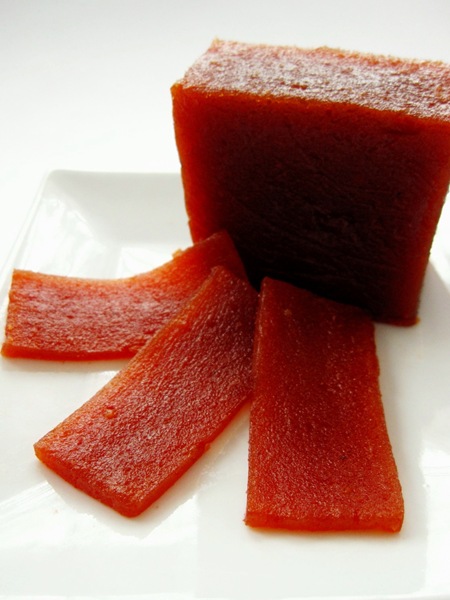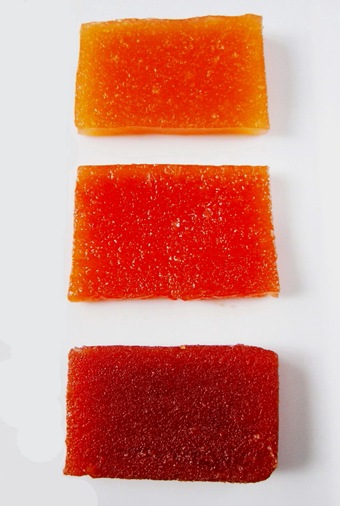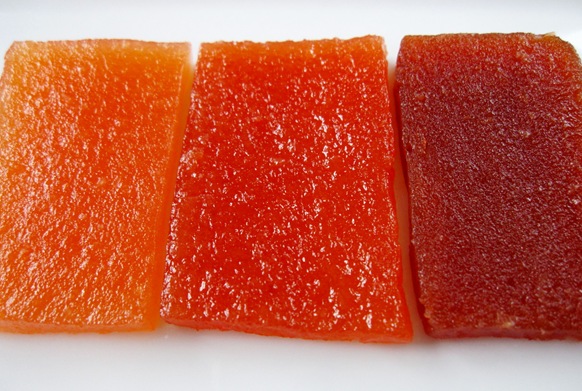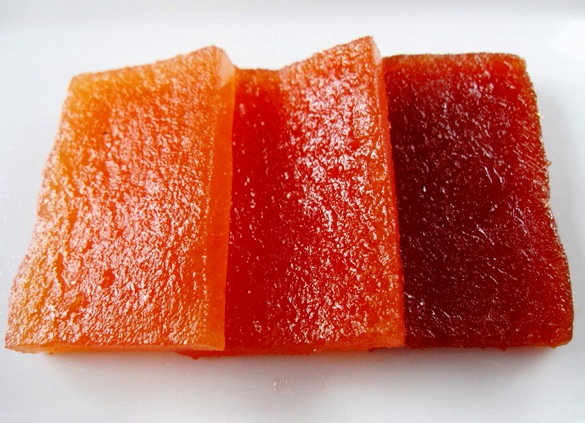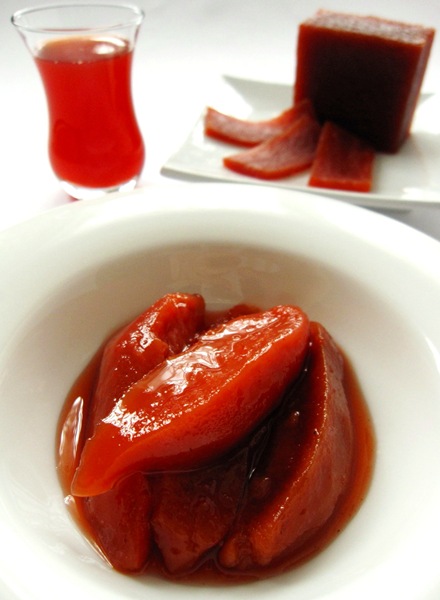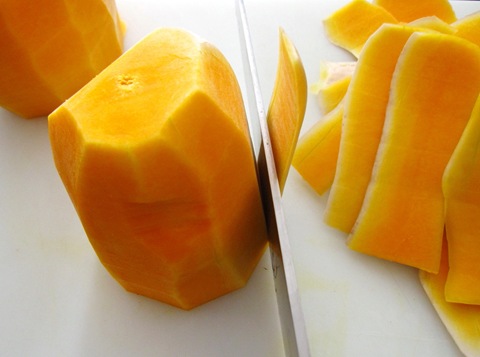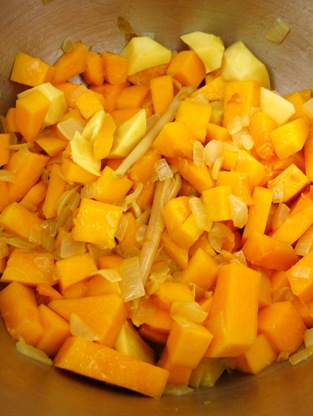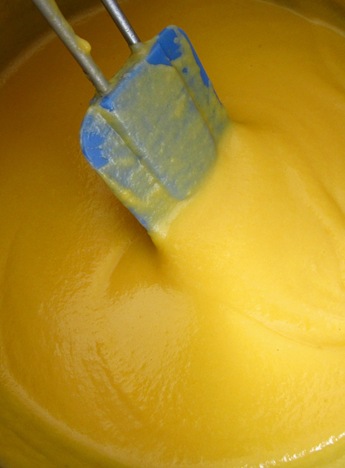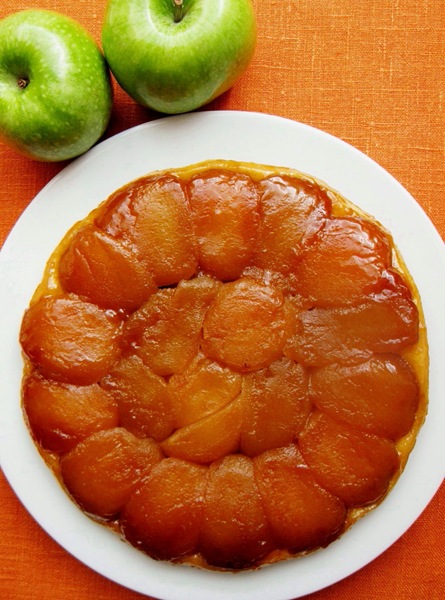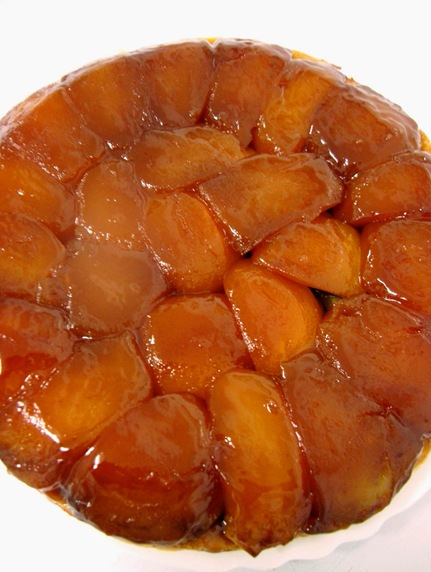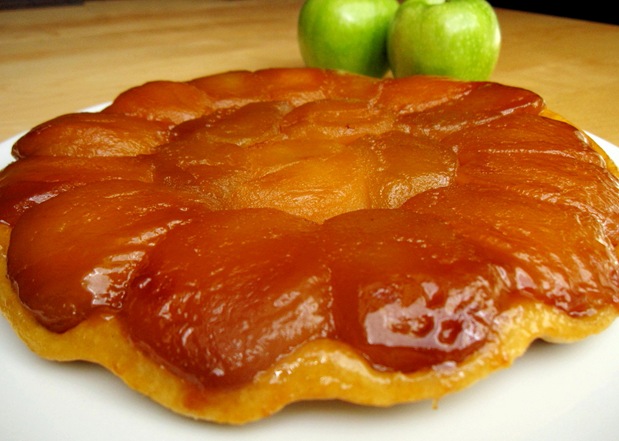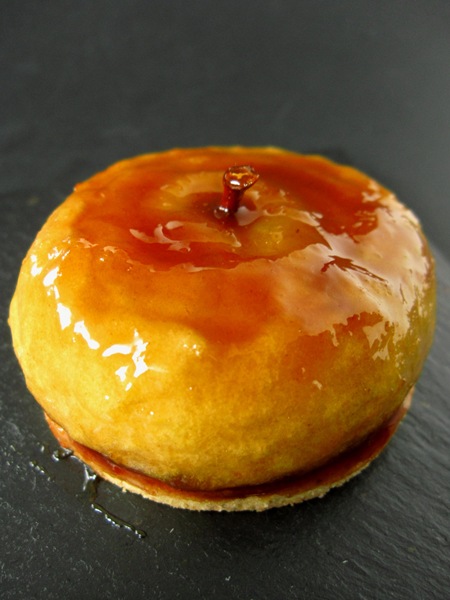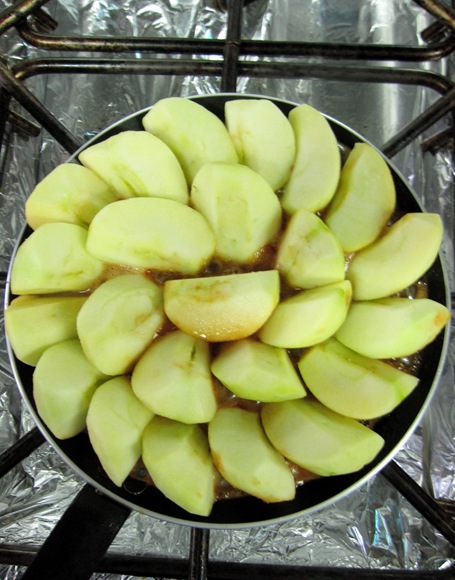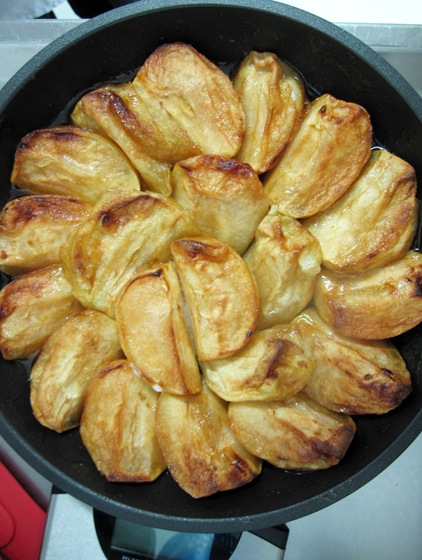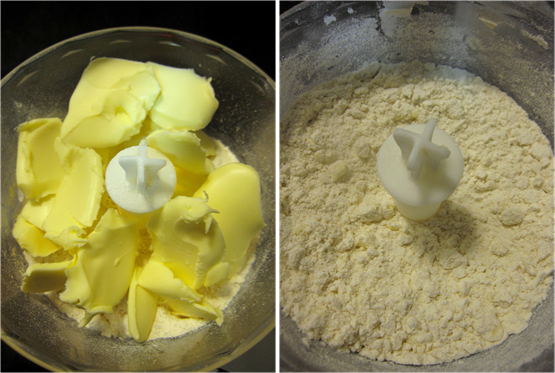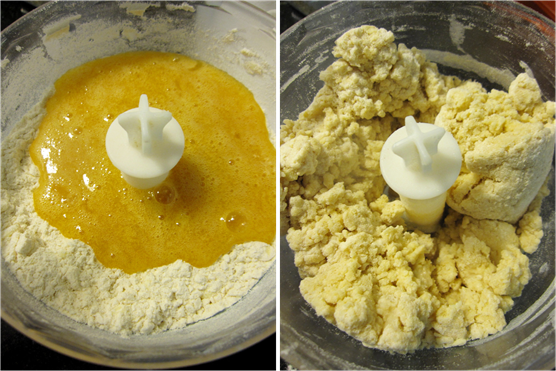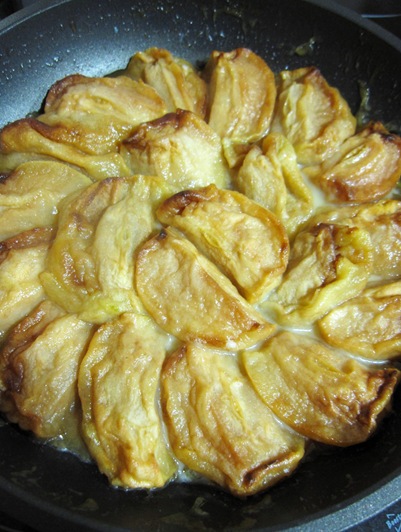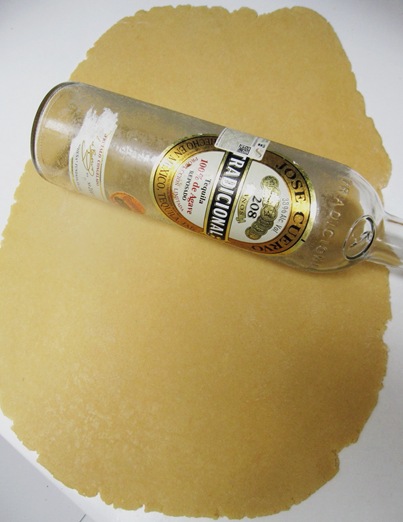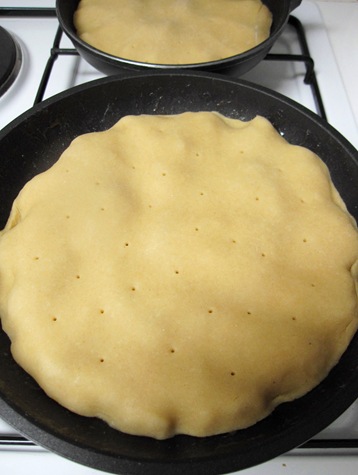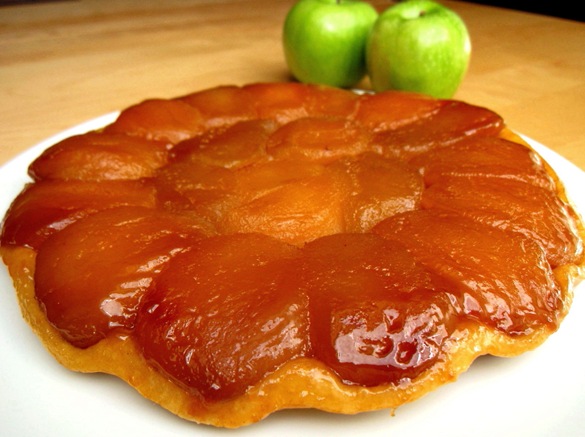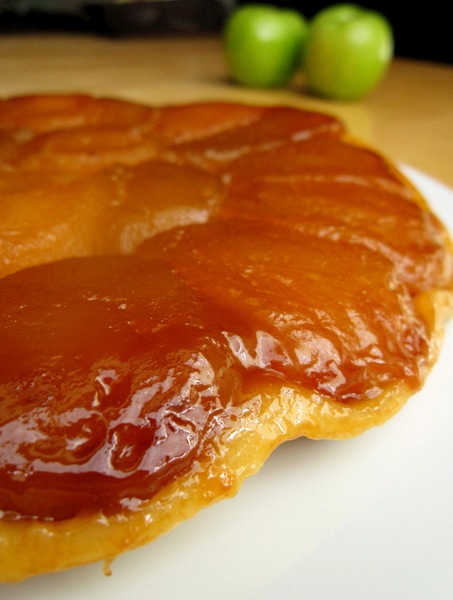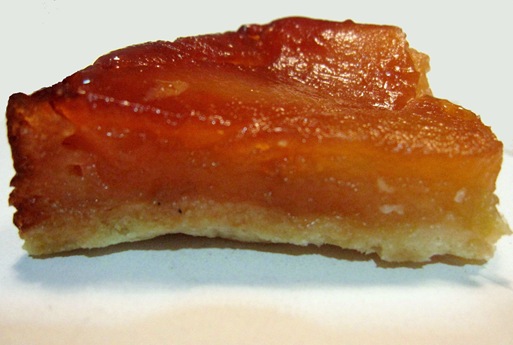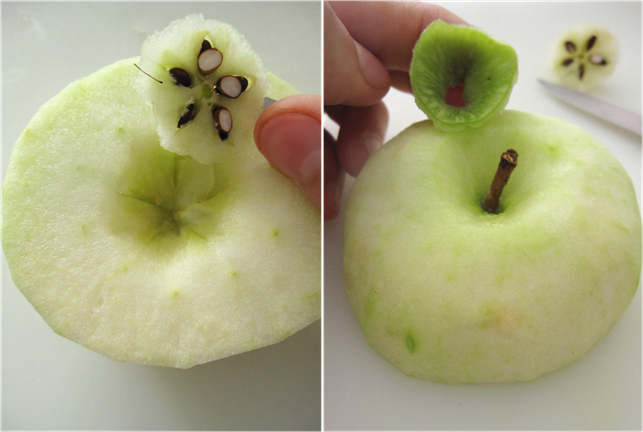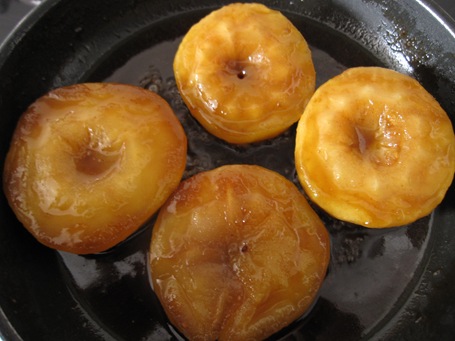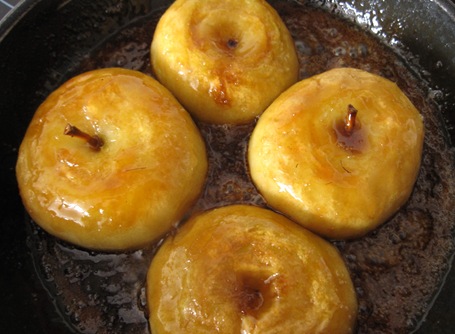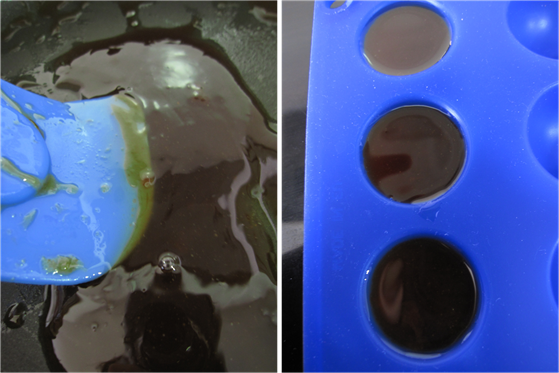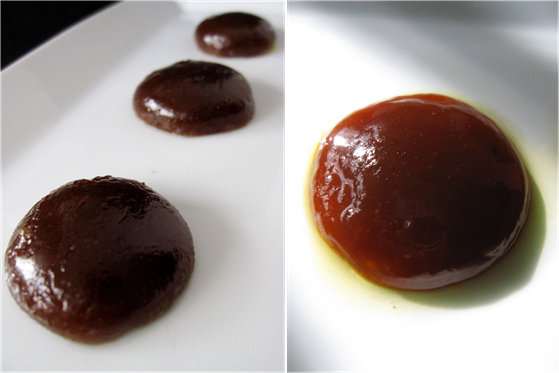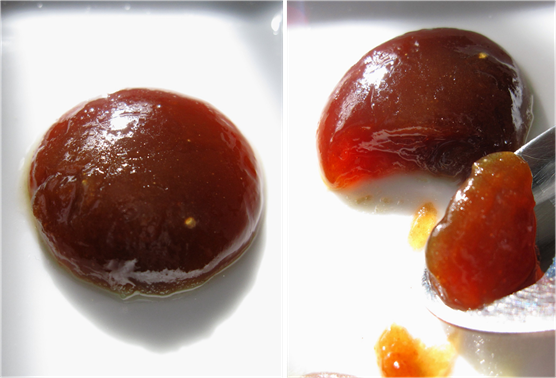I’d like to dedicate this post to my brother…amongst many other things because thanks to him I’ve got hold of fresh yuzu for the first time! I discovered yuzu juice a few years ago when working at a restaurant I bought it just to try from Cominport, a supplier of Japanese products (sorry, their page is either in spanish or japanese). I absolutely loved this japanese citrus strong aromatic flavour, but up until now I had never even seen the fruit itself or used the even more intense rind! To me it’s like a light-hued mandarin with a bumpy rind (as if it were a hybrid of keffir lime), with an aroma much more intense than a tangerine but with little juice and full of large seeds (which I will try to plant and see if I can grow a tree!!).
My brother went to Japan for holiday and amongst other amazing products brought these back for me. But…I wasn’t too sure on what to best invest these five jewels and time has been also as precious these last two weeks. So, up until yesterday I hadn’t even decided what to make with them…Thought of making yuzu marshmallows (you know I’m not too fond of sweet stuff, so my favourite marshmallows so far are on the sour side: lime rind and coconut and also maracuya or passion fruit and Kumquat. So yuzu has to be nice! I also though of some seared scallops with a soury beurre blanc or a delicious curd to use as a macaron filling or for small meringue tartlets (but I’d rather share with you my so far favourite maracuya curd some time soon). So, decided on a crème brulée type of cream…
I infused the cream with the grated rind, after trying to juice the fruit with no success (barely a drop had come out!) I blended the pulp with some extra cream and sieved it to mix with the rest to add the sour touch and mixed it with the yolks and sugar and let it cool down covered to let the flavours come out. Meanwhile we went out to enjoy the second sunny day in a long while! So, Linguini asked me what I was going to make to share with you and as soon as I told him crème brulée he disagreed with me! “But you’ve already published a crème brulée recipe!It should be something different”. The truth is that although the proportions are not exactly the same, if you have one recipe you could easily figure out how to change aromatic ingredients and balance the recipe. So, I had to think of what to do with the cream with egg yolks already mixed in!
I instantly thought I should have made a panna cotta. I love panna cottas, delicious, no need to heat up ingredients to keep all their fresh flavour if needed and super easy to make, just a matter of getting the perfect amount of gelatin to get a just set but trembling soft cream…but I already have a panna cotta recipe reserved. So, I came up with a “crema catalana”, which is simply the spanish version of the crème brulée but thickened on the stove instead of on the oven over a bain marie. So know, you’ll have two ways to make your crème brulées depending on your variables. For instance if you want it to set on special moulds that cannot be placed in a bain marie or in the oven, like cut bamboo canes or on japanese spoons like Haalo from Cook Almost Anything does here, this is a convenient and quicker way to do it! So, let’s get onto the recipe…
Yuzu “crema catalana” custard
(enough for 8 small ramekins)
500g of fresh cream (you can use only whole milk or 1/2 milk + 1/2 cream)
80g sugar
15g cornflour
5 yolks of M-sized eggs
2 whole yuzus (grated rind+processed deseeded pulp)
pinch of salt
optional: ~20g of butter (unsalted)
Bring your cream or/and milk to a boil and meanwhile grate your yuzus rind…
Do not waste a pinch…all that is precious supertasty rind! When the cream boils add the grated rind and cover with cling film to infuse for a while.
Then, cut your yuzus in half to remove the seeds. Can you see the amount of seeds it has?
Well not only does it have loads of seeds (to hopefully grow a tree) but also it has barely any juice! This I just found out (now I realise why that tiny little bottle I bought was so darn expensive…not only because it comes from Japan!). I did not realise until I tried juicing and was left with just blobs of pulp+seeds! Great start!
So, instead of my bright idea, do not attempt to juice the yuzu, just process/blend the pulp with some of the cream and strain it all back in, you must strain it or you’ll be left with this:
In another bowl beat the egg yolks with the cornflour and the sugar. Many people when preparing crème brulée beat yolks+sugar until pale and thick. This is mainly done to dissolve the sugar. So, since the hot milk will dissolve the sugar or if you leave it to rest for a while before placing on ramekins to set it will also end up dissolving, I never bother…Plus, then you need to remove the little bubbles on the surface so they don’t set!so, why the extra work?
Add the milk slowly whisking at first so it doesn’t coagulate the yolks, and then strain and return to the stove (the straining part is to remove any bits of egg white) By the way, I used a fairly thick strainer to let the rind pass through to not waste any of it, but if you prefer not to find it for a smoother finish, use a fine-mesh one.
You can leave this done and just thicken it when you are ready. I left it for a few hours to bring out the taste further, but you can go on to thickening it straight away. In that case, over low heat bring up to about 82-85ºC, or just until it thickens enough, so when you run your finger it leaves a mark…
When ready, remove from the heat and keep whisking (trying not to get air in) to cool in down, because otherwise it can curdle (even if it has cornflour).
I like to add a few knobs of butter to give it more shine and make it even smoother, but that’s just me, not needed, so you choose. When cooler and smooth pour onto the desired ramekins or bowls and leave to room temperature to cool down completely and then onto the fridge (if you cover them with cling film before they are cool, the vapour will condense on the surface, not nice). Ah, since it is fairly thick, give it a few taps over a kitchen towel to get the surface even.
It’s better rested…but we tried ours after 1 hour only! DELICIOUSSSSS!!!! They are soooo tasty…if you can find yuzu, you won’t regret this recipe!
I almost forgot to tell you about Panforum 2010! I’ve been reading and writing so much about how amazing it was for all of us who were lucky enough to have the chance to go that I feel like all has been said!
It was amazing to put faces to so many people whom I see everyday in El Foro del Pan (an amazing bread forum, in spanish, though english-speakers are welcome) and to share our own breads along with those of professional bakers. The whole day program was really interesting including short courses on specific baking techniques and a round-table discussion from some of the most reknowned bakers in the spanish scene. And last but nevertheless NOT least, Dan lepard was there to illuminate us all, give us advice on all our doubts and talk about the handmade loaf along with incredible stories from his travels and future plans. What can I say…Not to miss Panforum 2011!! If you want to check out more about it see this link of El foro del pan with some great photos or check out Miriam’s fantastic story on it in her blog The Winter Guest (she’s said it all!…in spanish, though. She always translates her entries but just not this one). Hope those who missed it can make it next year!

